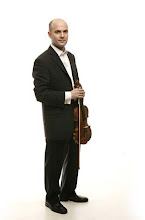Debussy First Rhapsody
Debussy wrote his Première Rapsodie especially for the annual clarinet graduation recitals or Concours at the Paris Conservatoire in 1910, a year after he had been invited by the director of the Conservatoire, Gabriel Fauré, to join the advisory board of the institution. Most solos de concours were straightforward bi-partite, slow-fast pieces designed to test and display the lyrical and virtuoso sides of a candidate's abilities. But Debussy uses a group of four themes to alternate lyrical passages with ones demanding digital dexterity, adding mastery of mood and tempo changes to the technical challenges of the Rapsodie. The Rapsodie inhabits the same sound-world as the first book of piano preludes, which Debussy finished at around the same time. Though it's called Première Rapsodie, Debussy never wrote a Deuxieme; perhaps he was making a pun on the fact that successful Conservatoire candidates were awarded a Premier Prix. And having negotiated the Rapsodie, those same 1910 students were then presented with a piece of accompanied sight reading also by Debussy, published as Petit Pièce. Both Rapsodie and Petit Pièce are classics of the clarinet repertoire, and Debussy later orchestrated them both. The Rapsodie is dedicated to the clarinet professor at the Conservatiore, Prospère Mimart "en témoigne de sympathie" (with an expression of sympathy), and Mimart duly gave the first public performance in January 1911.


